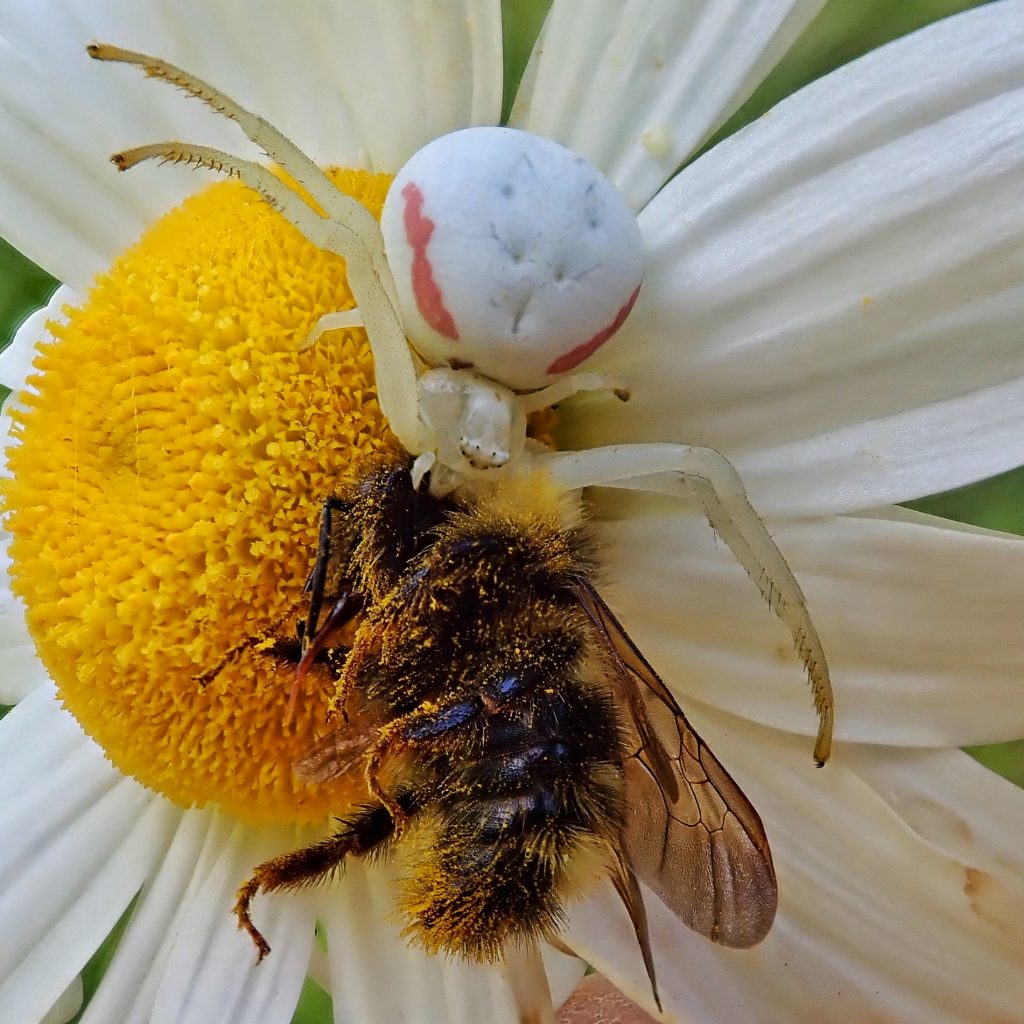
While it’s always a happy occurrence for me to find Misumena vatia on a flower, it is much less so for visiting pollinators. These ambushing spiders often capture prey larger than they are, because all they need to do is grasp it with their long, strong, front 2 pairs of legs (which are much longer than the rear pairs), bite it to inject fast acting venom, and hold on till the struggles are over.
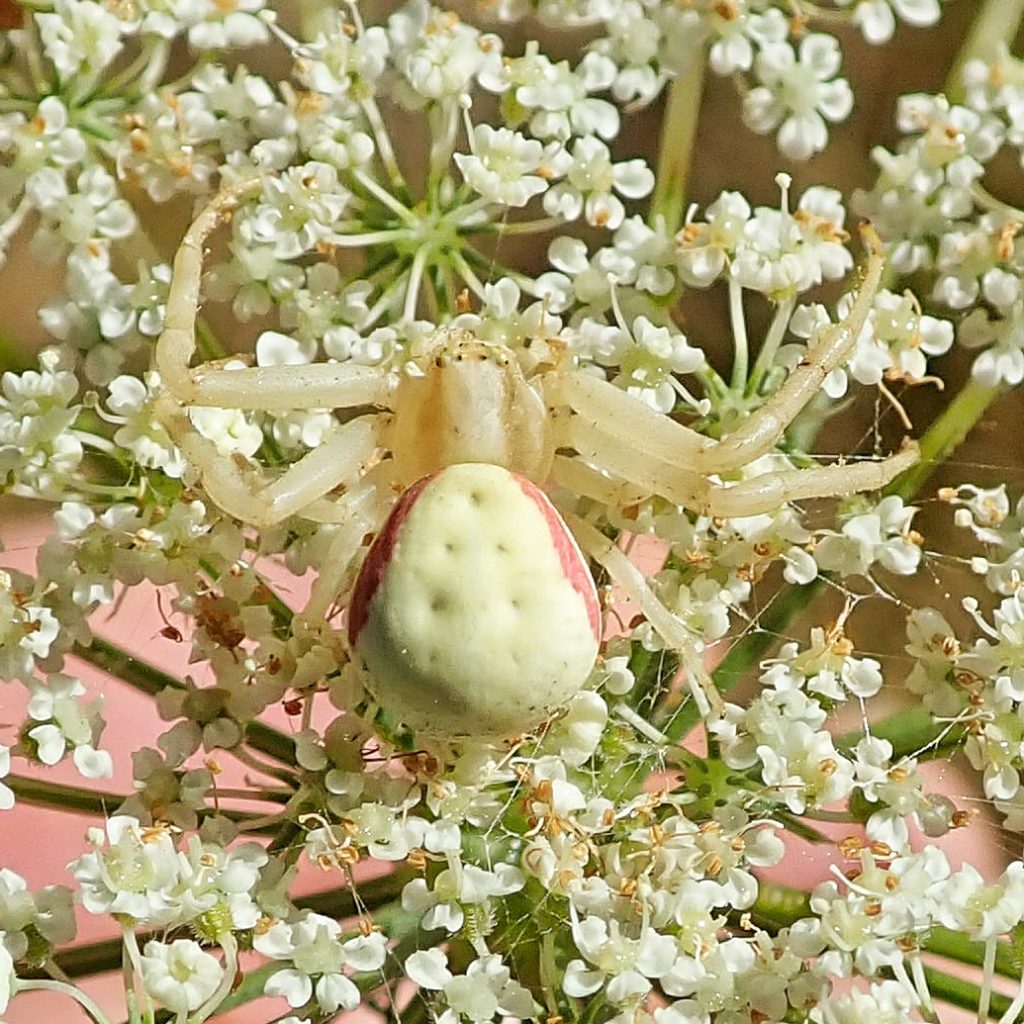
Goldenrod Crab Spiders exhibit significant sexual dimorphism. The females are much larger (6-9mm), and have a different pattern than the males (3-4mm). And the females, but not the males, can actually change color from white to yellow and back again, to blend in with the flower they have chosen as their ambush site! There is still research being done to establish exactly how this is accomplished, but it appears to involve secretion of yellow pigments when the visual cues indicate that is the background color. That process can take 10-25 days. But they can excrete those pigments and become mostly white again in 4-6 days.
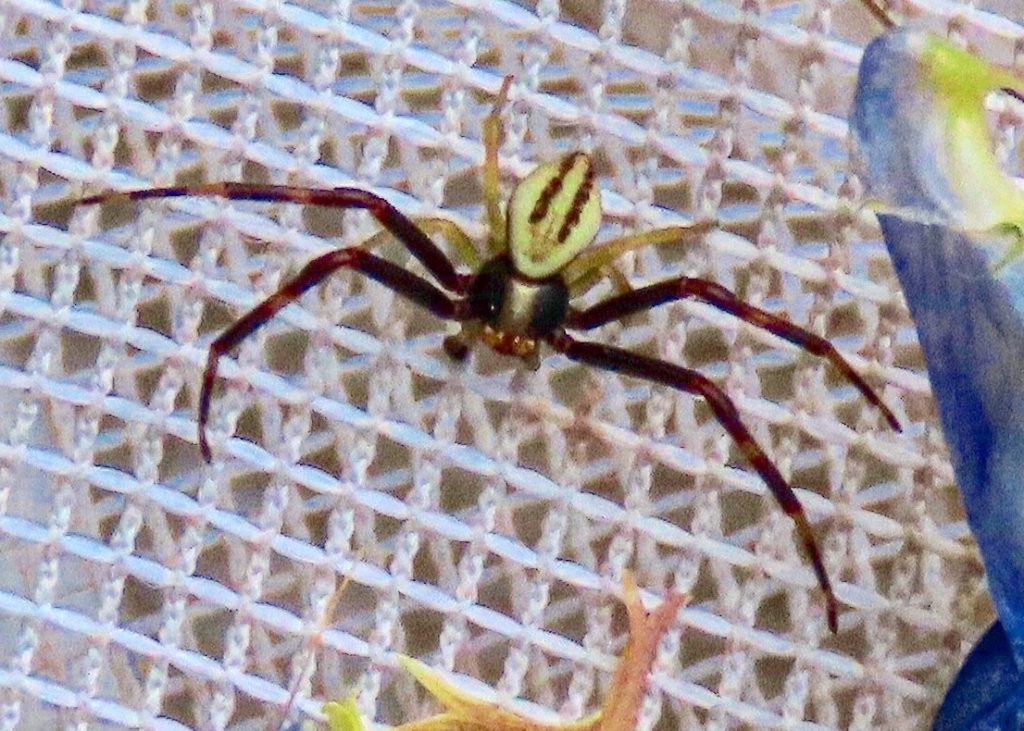
While the fact of this chameleon like change is well documented, and the process is being studied, the reasons for it remain a mystery. It had always been assumed that it gave the spider an advantage in securing prey, or avoiding predation. And some studies seem to bear that out. But others, conducted after it was discovered that bees see UV light, but non-UV reflecting spiders perch on UV reflecting flowers, showed no correlation between camouflaged spiders and non-camouflaged spiders and their rates of prey securement or predation avoidance. Nonetheless, it is a fascinating phenomenon!

Goldenrod crab spider • Misumena vatia
https://www.wired.com/2009/11/spider-color-changing-mystery/
Size- Females 6-9mm; male 3-4mm
Habitat- Usually in open areas
Range- Region wide
Eats- Bees, flies, Lepidoptera and other pollinators
Season- Adults are found from May to October in our region.
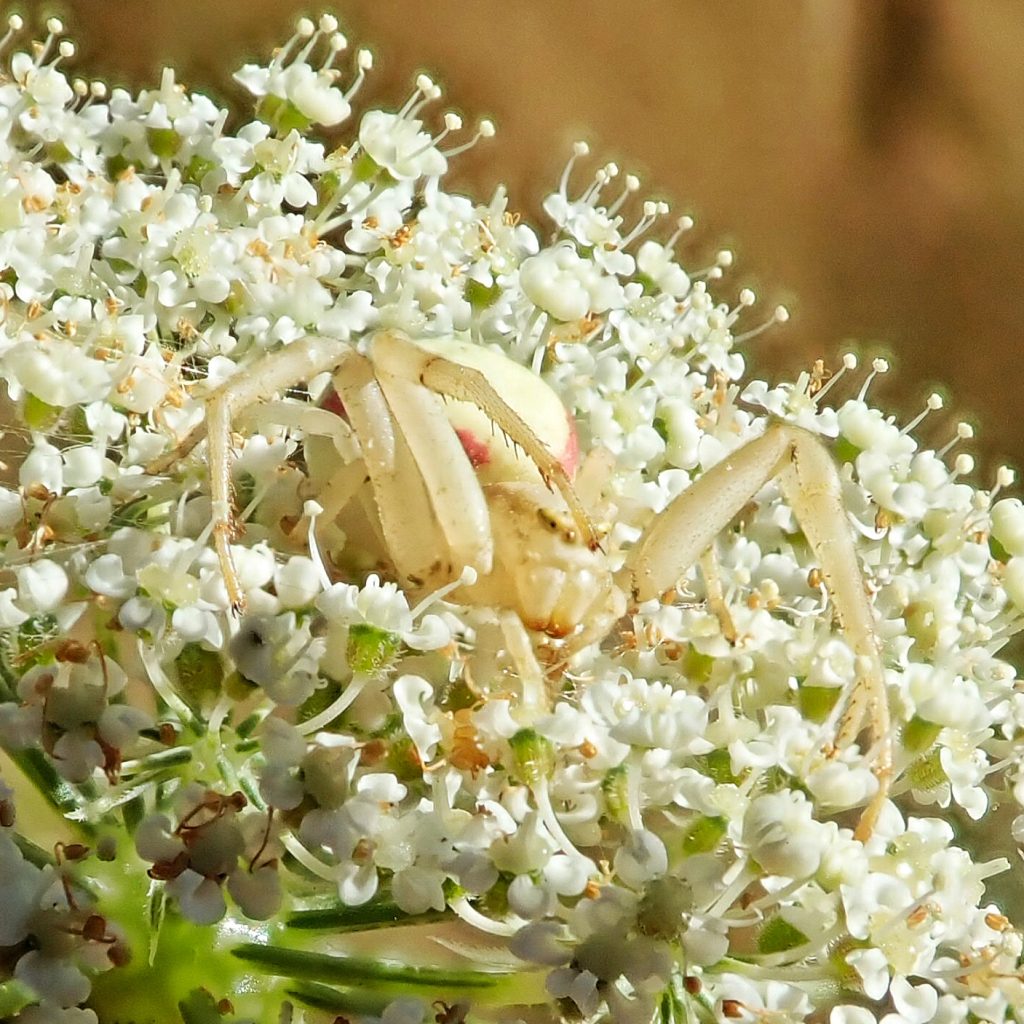
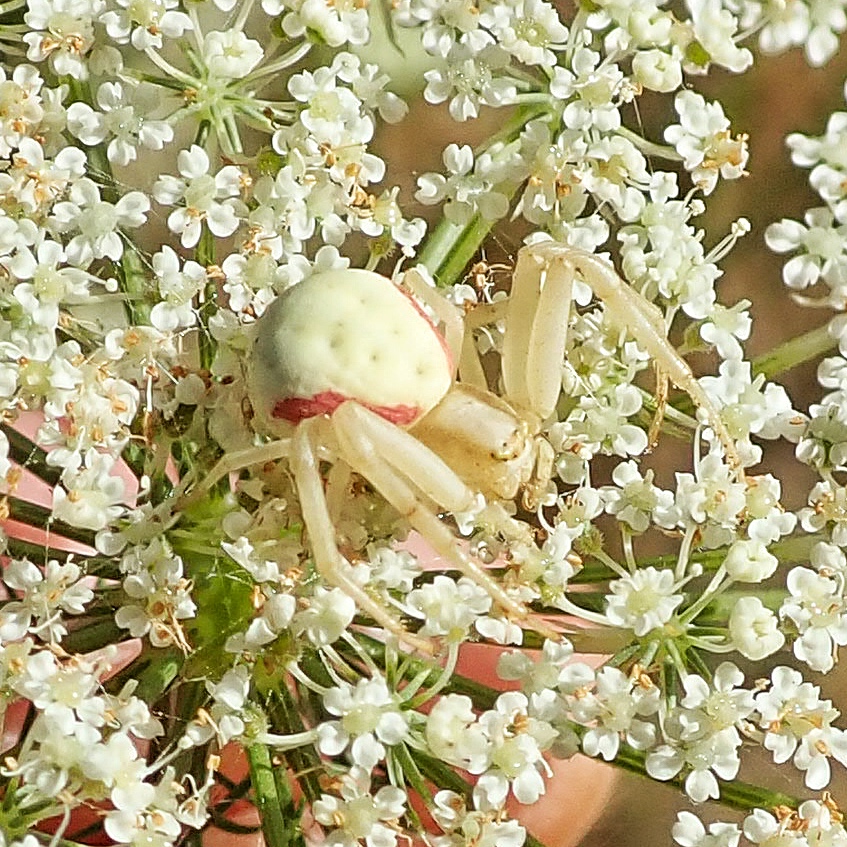
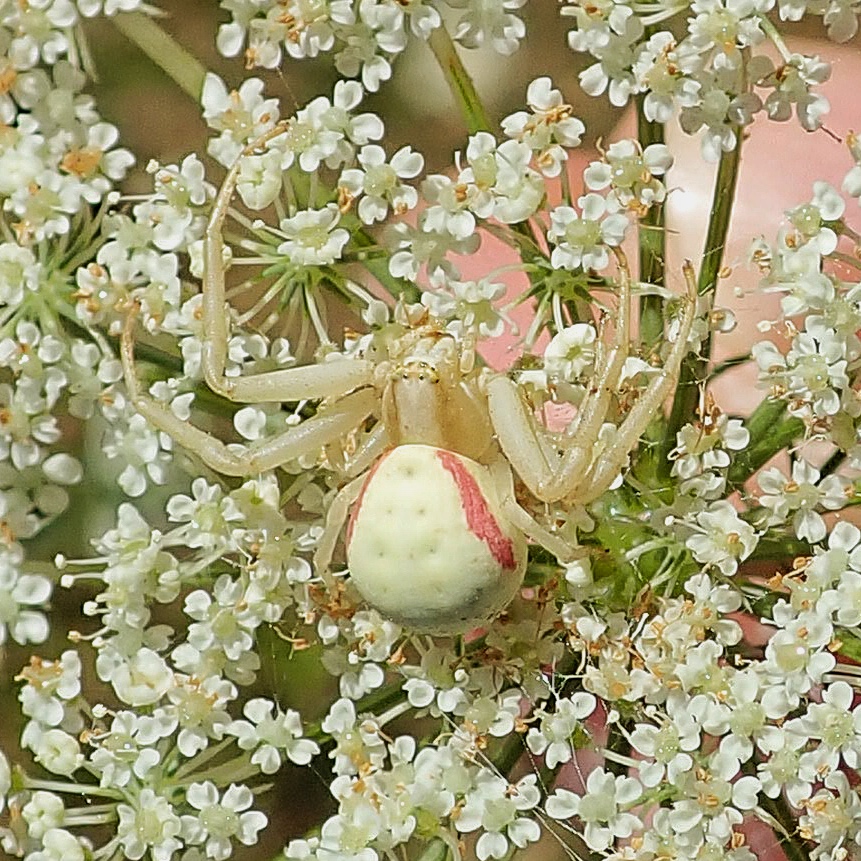
Fascinating! Thank you!
June 1st, 2023 I found a goldenrod crab spider on a carnation. I`m in Washington state close to the Pacific Ocean. Are these rare?
Not rare at all, Judy! They can have great camouflage, so there are more than people see. Glad you got to see one!
No I just found one on my pink rose eating a bee. They are common this time of year in Bellevue